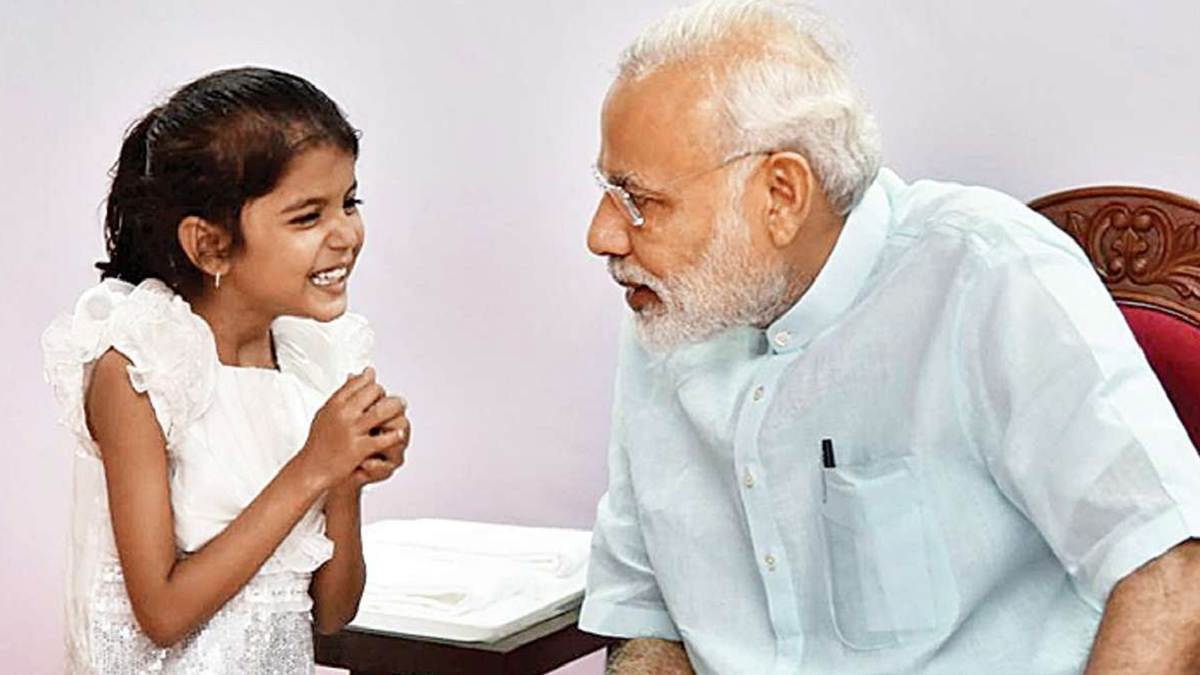For a country used to thinking in terms of trinities, it is perhaps apt that a trio of social, technological and environmental change is transforming India from the very grassroots.
India’s future in the next decade will be determined by the pace and quality of change in the health and well-being of its women, the protection and propagation of environmentalism at the very core of public life and policy, and at the base of it all, a fundamental push for egalitarian access to digital technology. Put in acronymised terms, one could say that GSD (Gender-Sustainability-Digitisation) is becoming the most important ingredient in the fasttrack growth of the Indian GDP (Gross Domestic Product).
There is reason for hope in each of these areas. Data from the Office of the Registrar General’s Sample Registration System (SRS) shows that with relentless personal campaigning on the rights of women (like Beti Bachao, Beti Padhao) the Maternal Mortality Ratio (MMR) in India has been falling steadily — from 130 (2014-16), 122 (2015-17), and 113 (2016-18).
More than ever Indian women are challenging the status quo. A new survey led by the Centre for Policy Research across more than 180 towns in India showed that women are more willing to challenge the status quo on marriage, friendship, professional life, politics and parenting. This suggests that India might be approaching the up incline of the famous Ushaped analysis of female participation in the labour market which states that women (especially married women) participation in the labour force first rises, then declines and then rises in a country’s journey from poverty to prosperity.
The second fundamental factor transforming the country is Prime Minister Narendra Modi’s personal commitment to push sustainable energy solutions. Ever since his leadership at the Paris Agreement, India has been consistently moving towards fulfilling its emission reduction targets. Recent achievements include the unveiling of Asia’s largest solar power plant in Rewa, Madhya Pradesh. Also, the thrust towards electric vehicles is growing with the announcement that Rs 10,000 crore of government funds would be spent in the second phase of the Faster Adoption and Manufacturing of Hybrid and Electric Vehicles (FAME 2) to increase the use of electric vehicles (EVs) and hybrid vehicles — with significant allocations and incentives to mushroom charging stations across the country.
Serious efforts are being made to rapidly increase the scale of solar cell manufacturing from the current capacity of 2,500 MW. The government think-tank Niti Aayog has also suggested ambitious targets for the conversion of two- and three-wheelers wholly to electric by around the middle of the decade. Several Indian states already have detailed EV policies. Also, India’s renewable energy sector is flush with funds, with investors pouring in several billions in the last few years. The country has set perhaps the world’s most ambitious targets in the use of renewable energy of installing 175 GW of renewable energy capacity by 2022, including 100 GW from solar, 60 GW from wind, 10 GW from bio-power and 5 GW from small hydropower. Additionally, under the Namami Gange scheme, funds have been allocated to depollute the river Ganga through community participation as well as providing sustainable livelihoods to those living in its close vicinity. This is closely connected to the Green Skill Development Programme which aims at preserving the environment while developing skills and promoting green livelihoods.
The third idea transforming the country is digitisation. India is becoming a digital-first nation. The base architecture for this change is the JAM trinity — a ubiquitous bank account meets numerical, digital verified identity numbers for a billion people meets easily available, often dirtcheap Internet usage via mobile phone foundational structure upon which everything from prescriptions to pedagogy are increasingly being built. Already there is an India Stack, now a National Health Stack is in the offing. It is now clear that direct benefit transfer of more than $5 billion during Covid-19 has played a crucial role in the upkeep of the most vulnerable parts of Indian society, especially in rural areas — it is also why demand in rural areas is outstripping that from urban areas as the Indian economy restarts after the pandemic. Additionally, the PM-Kisan scheme, for instance, has transferred Rs 90,000 crore to more than 10 crore farmers since its launch in December 2018. This digitisation powered by the UPI (United Payment Interface) fuels around 100 million digital transactions a day these days (worth Rs 5 trillion) and this, says the Reserve Bank of India, is likely to climb to 1.5 billion transactions a day worth Rs 15 trillion by 2025.
It is important to understand these are not mere infrastructural or social transformations — they go to the very heart of how Indians, at an average, perceive themselves and their way, and place, in the world. The new education policy of India promotes initial years of learning in the mother tongue, and equally importantly it pushes for teaching coding as a basic language at the middle school level. For a very long time, this country has spoken of itself as India and Bharat, two worlds in one country, the cosmopolitan and the provincial, the wealthy and the making-ends-meet. The GSD trinity is likely to be the final collapse of these protracted divisions. Every research shows that when education fuels aspiration among women, societies transform. Empowered by digitisation, this could well be the beginning of the moment when India recognises its ancient wisdom — that of a sustainable feminine worldview. The sustainable way is feminine way, that is why we speak of Prithvi Mata or Bhoomi Devi, or, if you will, Mother Earth.
Covid-19 has proved that the world of relentless consumption for consumptionsake is just not sustainable. A better path must be found. A GSD trinity-led transformation of India could show the world a better way.
Ankita Sharma is senior researcher, and Hindol Sengupta is vice-president and head of research at Invest India, the national investment promotion agency of the Government of India.













